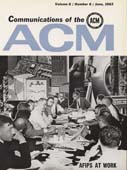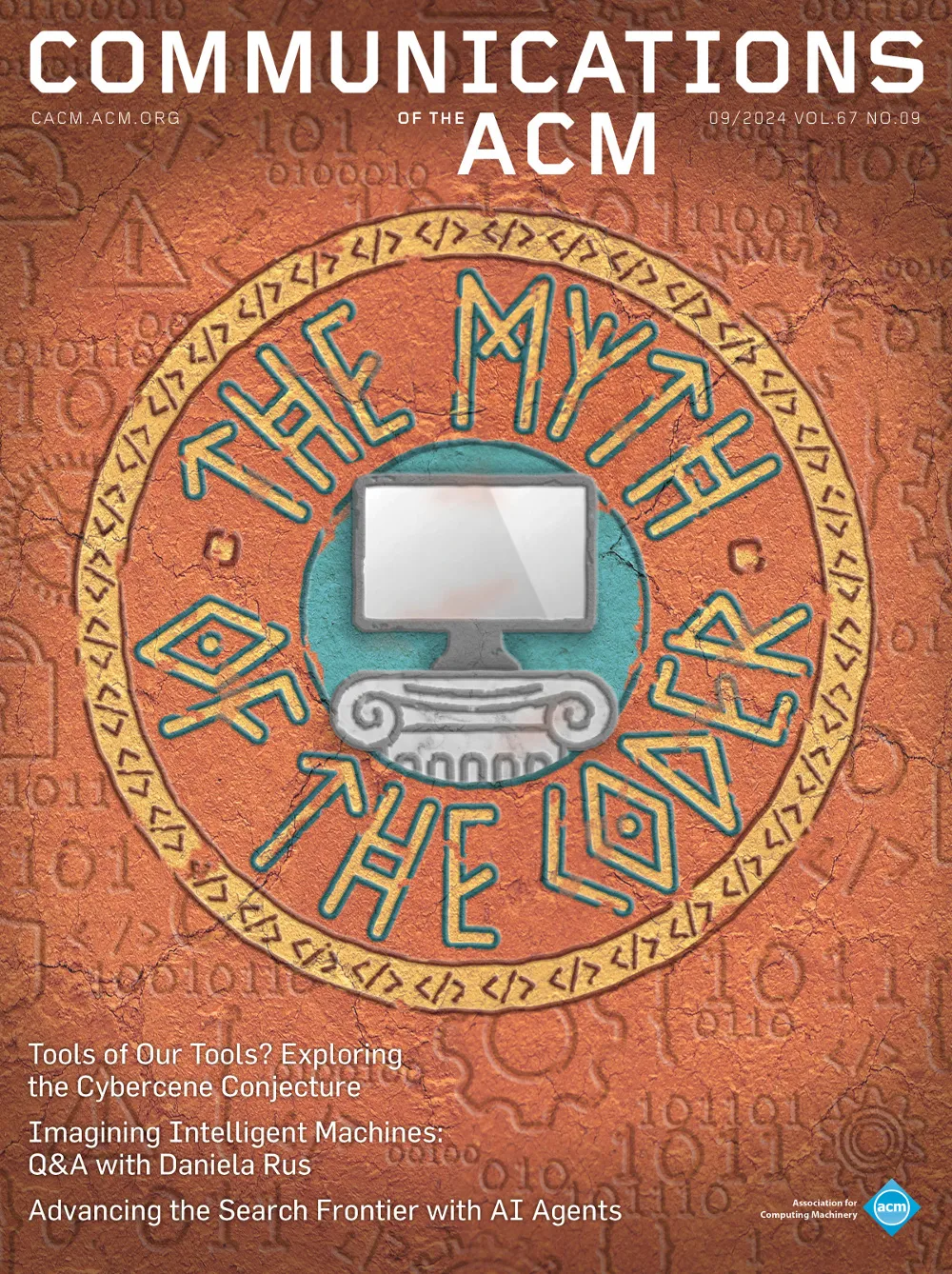June 1963 - Vol. 6 No. 6

Features
A note on range transformations for square root and logarithm
There was the germ of an idea in two previous papers [1, 2] which no one seems to have picked up in almost five years. For certain functions it seems desirable to transform the argument to a short range symmetric about 1.0. I will give examples of this usage for the square root and logarithm function for both binary and decimal machines.
The logic of a penny-matching program written for the CSX-1 is described.
A computer program for analysis of variance for a 2-level factorial design
Although many computer programs exist for handling analysis of variance, most of them employ the conventional methods described in statistics books for finding the sums of squares.
CORC—the Cornell computing language
CORC is an experimental computing language that was developed at Cornell University to serve the needs of a large and increasing group of computer users whose demands are both limited and intermittent. These are the laymen of the computing world, who chose to become as little concerned as possible in the computing process and mechanics, but who would like to benefit from the computational ability that is now commonplace. At a university most of the faculty and student users would fall into this category. In recognition of the current significance of the computer in every area of business, science and engineering there is increasing faculty interest in introducing some use of modern computation into the students' academic experience if this can be done without placing too great a burden on an already hard-pressed curriculum. But computing is not going to be widely used in mathematics and engineering courses if the mechanics of its use are a burden to either the teacher or the student, or if the time necessary to prepare, test and operate programs cuts significantly into the subject matter for which the course was intended. Some participation on the part of the student appears to be an academic virtue, as well as a practical economic necessity—we have never heard any university computing center expansionist, in his wildest moments, propose a completely closed shop programming-operating service for general undergraduate use. In their own research many of the faculty are in the same position as their students. They will use the computer if it is convenient to do so and if it does not involve a major diversion into a technical field which is essentially extraneous to the basic subject matter. The closed-shop computing service in which the professor has (in principle anyway) only to describe his problem to a professional is of course intended to serve this need but we believe it is axiomatic that no university computing center will ever be adequately staffed to
Incompressible flow network calculations
A general method for the calculation of flows and pressures in fluid flow networks is presented. The method is applicable to computer use.
Use of the “building-block” type of approach suggested in [1] is heartily recommended. It has been used by our computer center for over a year with excellent results.
PIP: a photo-interpretive program for the analysis of spark-chamber data
Sorting techniques using an IBM 1401 with a random access storage device are evaluated.
DESCRIPTRAN—automated descriptive geometry
Descriptive geometry consists of procedures originally designed to solve 3-space geometry problems by graphical constructions and measurement instead of by computation. However, in addition to this it unifies and simplifies the approach to many such problems. When one can call subroutines that compute new coordinates that correspond to those obtainable from the graphical constructions, there is the three-way advantage of the approach of descriptive geometry, the accuracy of computation and the speed of the digital computer. DESCRIPTRAN makes it possible to program many problems in 3-space with a few statements; it consists of 15 subroutines analogous to the procedures of descriptive geometry.



